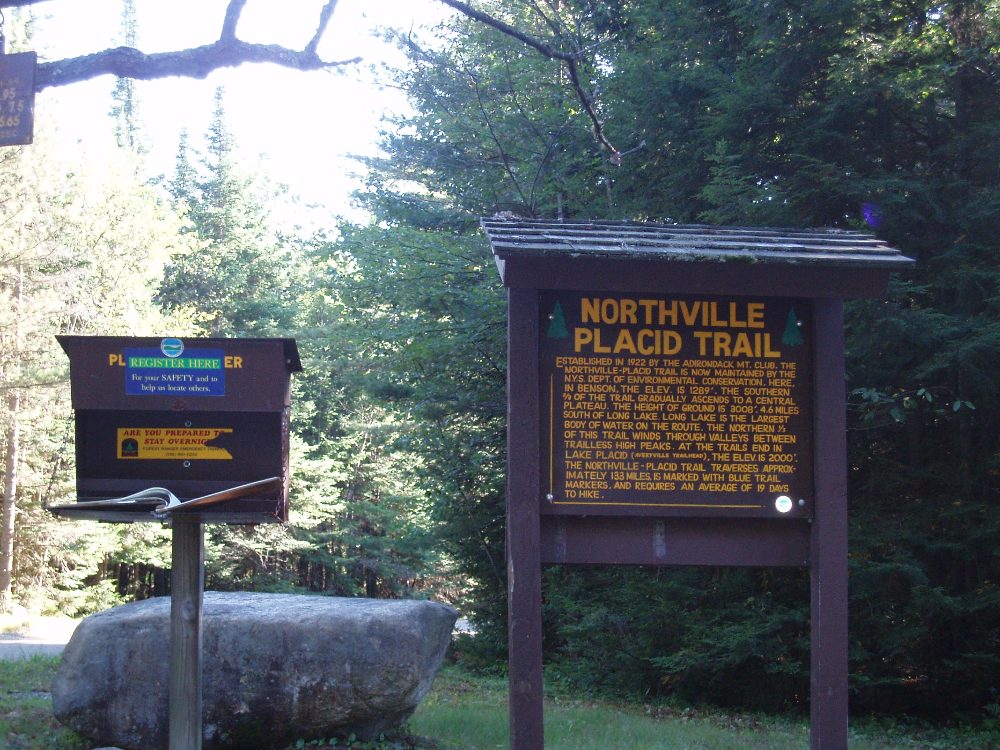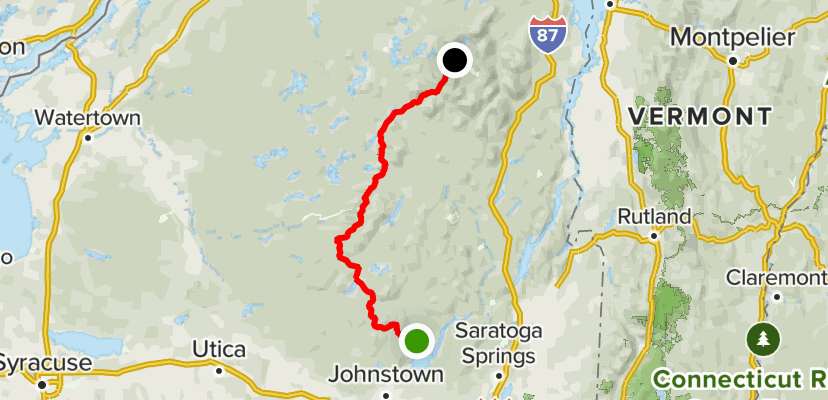Where did trails today come from?
There were many different sources of trails that make up modern day trail systems in the park. Logging roads and primitive roads to settlements make up the vast majority of trails in the southern Adirondacks. For example, part of the Northville Placid Trail between Big West Lake and the Cedar Lakes was once a logging road. This was a common source of many snowmobile trails. Some roads from hemlock forests to tanneries also became modern day trails. Old railroad grades are an additional source of some modern day trails, for example, portions of the Adirondack Division of the New York Central Railroad have been designated as snowmobile trails and sections of the Raquette Lake Railway are now marked for hiking. Aside from roads and railways, some trails today predated the park and were used for outdoor recreation purposes. Private estates, clubs, and hotels all maintained their own trails. Trails and paths preserved by sportsmen and guides also contribute to the trail system today (McMartin).

A Northville-Placid Trail Head
Early State Trails
The process of state trail development began in 1909, when New York state began building fire towers as a tool for fire safety and prevention on some peaks. Along with the fire towers came trails to the towers, again a safety precaution. In 1919 a Conservation Commission report mentioned that some side trails to vistas had started to develop off of fire tower trails. The following year the report included the first mention of a more thought out trail system, as tourism in the region began to pick up, and the conservation commission began to use disks of various colors to identify different trails. The state’s most significant effort towards trail building during this period was a new route to Colden constructed in 1923 by State Forester Arthur S. Hopkins and Ranger Clinton West. Trail building flourished during the early 1900s; from 1921-1923 state trail mileage jumped from 103 to 286 miles. Keep in mind that much of this increased mileage can be attributed to the state’s takeover of privately built trails.

In 1922 the Adirondack Mountain club began rough-cutting a marking the Northville-Placid Trail, the longest trunk trail in the park at 134 miles. In 1929 the Adirondack Mountain Club turned the trail over to the Conservation Department (McMartin).
a modern GPS map of the Northville-Placid Trail
Image Sources:
Image 1: https://www.adirondackalmanack.com/2010/11/a-new-website-for-the-northville-placid-trail.html
Image 2: https://www.alltrails.com/trail/us/new-york/northville-placid-trail–2